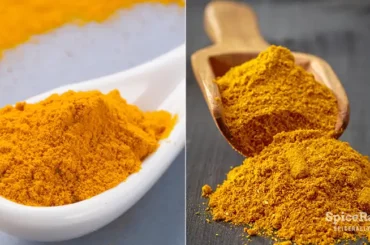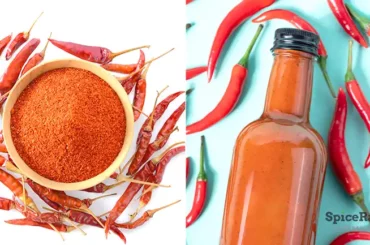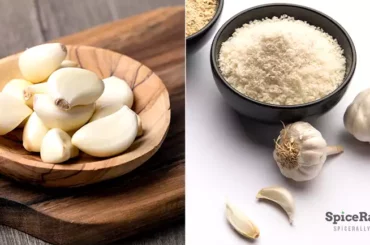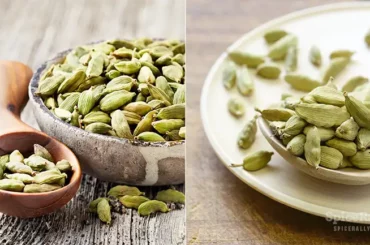Several forms of vanilla in the store may confuse you, leaving behind a doubt about what you should really shop for. Thus, we will explain how to use vanilla in the different dishes you make.
Vanilla is a spice that comes with a variety to add complexity to cakes, cookies, puddings, ice cream, smoothies, drinks, etc. Vanilla beans, vanilla bean paste, extracts, vanilla syrup, vanilla sugar, and vanilla salt are the main types that are used in baking, sweet and savory preparations, beverages, etc.
So, let’s get to know which product to use with which dish in order to get the best vanilla flavor and aroma for a tantalizing treat!
How To Use Vanilla?
Vanilla is obviously the most ubiquitous baking spice you can find in your pantry. It is so versatile, adding a ton of flavor and aroma to whatever it calls for. Ten years back, you could have only found one or two forms of vanilla in the market. But today, you have the possibility to get hold of a bunch of different varieties under various brand names.
So, in this episode, we hope to cover the usage of eight main forms of vanilla that is readily available. And they are:
- Vanilla beans
- Vanilla bean paste
- Pure vanilla extract
- Artificial vanilla extract or vanilla essence
- Vanilla powder
- Vanilla syrup
- Vanilla sugar
- Vanilla salt
This guide will be super important if you need a clear idea and knowledge about the right form of vanilla that you should use in the next dish you wish to make.
01- Vanilla Beans
Vanilla beans come enclosed inside cured vanilla pods, and it is the most expensive vanilla form. You can usually find hundreds of tiny, flavorful, and aromatic vanilla beans inside these vanilla pods. To use, you should split open them using a sharp knife and then scrape out the content.
Good quality vanilla beans usually contain a high-concentrated vanilla flavor, and they have a moist, pulpy texture. When used in a particular dish, you will have a spotlight flavor, aroma, leaving tiny, brown specks that will give a new dimension to the recipe.
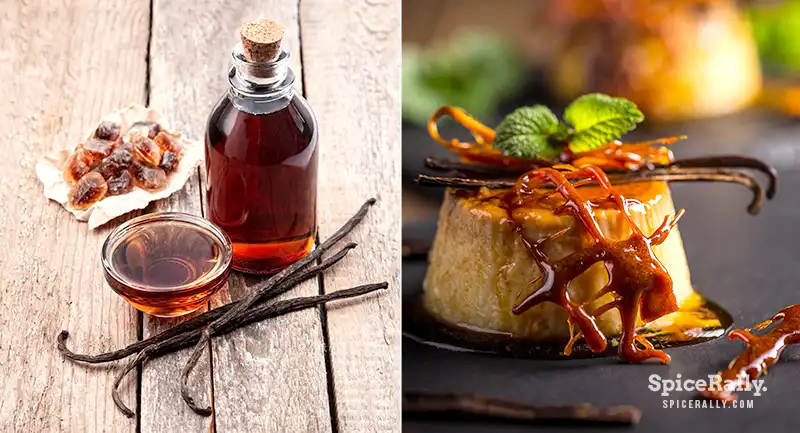
Accordingly, you can use real vanilla beans in the following ways:
- Ideal with uncooked or slightly simmered recipes
- With artisan-quality desserts
- To infuse with a hot liquid when making certain beverages, syrups, etc.
- Ice cream
- Poached fruits
- To whip with creams
- Rich frosting
- To make jelly and jam
- To make homemade vanilla extract
- Adds a flavor twist to savory dishes like butter sauce and apple puree
02- Vanilla Bean Paste
Vanilla bean paste is a gelatinous substance that often comes in jars and is much more affordable than vanilla beans. It packs a punch of pure, bold vanilla flavor but could be a little less intense than the beans themselves since these jars stay for a while on the shelves of the stores.
Hence, if you are looking out for a simpler way to get the same visual effect, flavor, and aroma as real vanilla beans, we can suggest the vanilla bean paste as a great, less expensive option.
But keep in mind that vanilla bean paste is a bit more processed than natural vanilla beans since it may contain additives like sweeteners, stabilizers, thickeners, and preservatives to get the texture.
This type is great with sweet dishes with a thicker consistency, such as:
- Whipped cream
- Ice cream
- Frosting
- Pudding
- Custard
- Sweet pies
- Oatmeal
- Smoothies
- Vanilla Crème Brûlée
03- Pure Vanilla Extract
This is different in consistency than vanilla beans or the paste since it is basically a liquid. Pure vanilla extract is made by infusing 13.35% vanilla bean solids with at least 35% of alcohol. Moreover, this option will not have the vanilla specs you usually get by using real vanilla beans or vanilla bean paste.
However, due to its availability and affordability, the pure vanilla extract could be considered the most commonly used vanilla product, especially in large-volume and high-grade commercial baking. This option works well with almost every recipe. But it most likely complements cookies, cakes, and brownies big time.
In addition to these dishes, pure vanilla extract can be used in recipes like:
- Sweet pies
- Buttercream frosting
- Sweet sauces
- Jams and jelly
- Scones
- Biscuits
- Hot and cold beverages like coffee, tea, milkshakes, etc
- Cocktails
- Pudding
- Glazes
- Pancake batters and sweet dough
- Confectionary
- Yogurt
- Ice cream
- Sweetbreads and buns
- To flavor whipped cream
- To make certain savory dishes
04-Artificial Vanilla Extract Or Vanilla Essence
Artificial vanilla essence is made from synthetic vanillin, popularly known as vanilla essence, and is commonly used in large-scale commercial bakeries. This product is relatively less expensive than pure vanilla extract, bean paste, or real beans.
Imitation vanilla extract usually has a less concentrated one-note vanilla flavor, and you don’t get the same visual effect you would normally get by using beans or the paste. It is a thin liquid that is often light brown or clear in color.
However, artificial vanilla extract is picked by many bakers to make recipes that count for high temperatures, such as:
- Cookies
- Cakes
- Biscuits
- Bread
- Buns
- Steamed puddings
- Hot beverages
- Syrups
- Sauces
- Colorless imitation vanilla is an excellent option for color-sensitive recipes (white wedding cake icing, light-colored cakes, etc.)
Vanilla could be classic, but vanilla is never basic. In fact, those who fall in love with the miraculous flavor and aroma of vanilla never think it is basic.
SpiceRally
05- Vanilla Powder
This option has a dry consistency which is different from any of the vanilla forms discussed. Pure vanilla powder is typically made by pulverizing real vanilla beans. This product has a rich vanilla flavor, and some options may contain sweeteners.
Vanilla powder is an excellent choice when making buttercream, especially if you live in a tropical area where the weather is very hot. Buttercreams tend to melt soon in a hot atmosphere, so using vanilla extract could make the buttercream more watery. Therefore, using vanilla powder is an excellent solution in such situations.
In addition to buttercream, the vanilla powder could also be used in recipes like:
- To infuse into homemade pancake and waffle mixes
- Coffee
- Doughnuts
- Cookies
- Macarons
- Protein powders
- To blend with milk powders
- Smoothies and shakes
- Puddings that should be cooked or baked in high heat
- Oatmeal
- As a sprinkle on top of certain goodies like brownies, toast, spiced cakes, etc
06- Vanilla Syrup
Vanilla syrup typically comes together with vanilla extract/vanilla beans, sugar, and water. It is a concentrated, syrup-like liquid that is more versatile when making drinks. However, since this product is sweet, you should be careful not to overpower your recipes with sweetness.
That is, if you only need the vanilla flavor in a certain recipe, vanilla syrup could not be a favorable choice. However, the liquid consistency of this syrup can give you an evenly incorporated smooth yet rich vanilla taste in your hot and cold beverages.
This could also be used as a great alternative for maple syrup or honey in specific recipes since vanilla syrup is not overwhelmingly sweet like other sweeteners. Consequently, this option complements recipes such as:
- Latte
- Shakes
- Coffee
- Tea
- Glazes
- Cocktails
- Fruit salads
- Salad dressings and vinaigrettes
- It can be drizzled over pancakes or waffles
- It can be infused with certain mocktails
- To make other complex syrups
- Jams and jellies
- Confectionery
07- Vanilla Sugar
Vanilla sugar is made by infusing regular sugar with vanilla bean or vanilla extract, and this is a staple baking ingredient found in most German baked goods. You can get this from the store or simply make it at home by mixing white granulated sugar and vanilla beans.
While vanilla sugar could complement a wide range of sweet baked goods and desserts, it could also add a new flavor dimension to savory preparations like barbecue sauces and vinaigrettes. Moreover, this ingredient can be used in dishes like:
- Sweet batter and dough mixes
- Frostings
- Whipping cream
- To mix into fruit salads
- To sprinkle on top of freshly baked cakes, cookies, and pies
- Stir into tea, latte, or coffee
- Add it to homemade ice cream
- Dessert smoothies
- Fruit tarts and fruit-infused shortcakes
08- Vanilla Salt
If you haven’t heard about this form of vanilla, this might confuse you a little bit, wondering how a savory-inclined ingredient could pair with a sweet-inclined component. Well, in that case, we should say that vanilla salt does make a great pair together, versatile enough to add a dynamic flavor to many dishes.
This ingredient basically possesses an intricate salty vanilla note that will give a twist to your favorite desserts, baked goods, and even some beverages! Accordingly, vanilla salt can complement dishes like:
- Salted caramel
- Stir into whipped cream (you can mix this with coffee or shakes!)
- Cream cheese frosting
- Sprinkle on chocolate chip cookies
- Brownies
- Almond toffee
- Macarons
Concluding With Vanilla Uses…
Freshly scraped vanilla beans in your pudding or custard, vanilla bean paste in ice cream, vanilla extract in cakes, vanilla powder in your favorite buttercream, a drizzle of vanilla syrup in coffee, or fragrant vanilla sugar in tea could actually make a real life-changing food experience! This is a must-have ingredient in all your baking, and it could also make a mysterious taste twist in many of your savory recipes.

